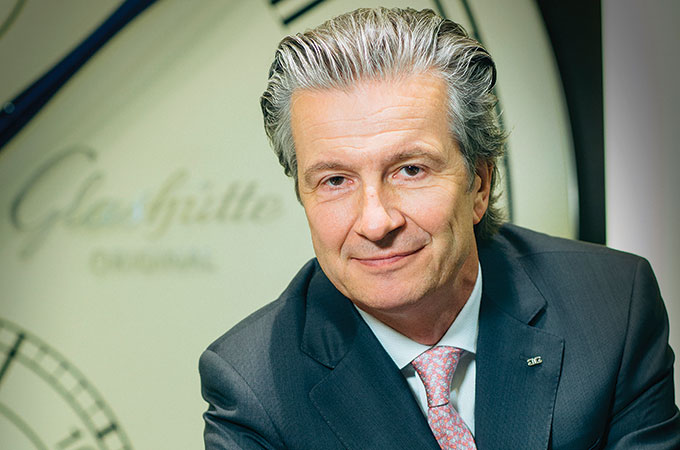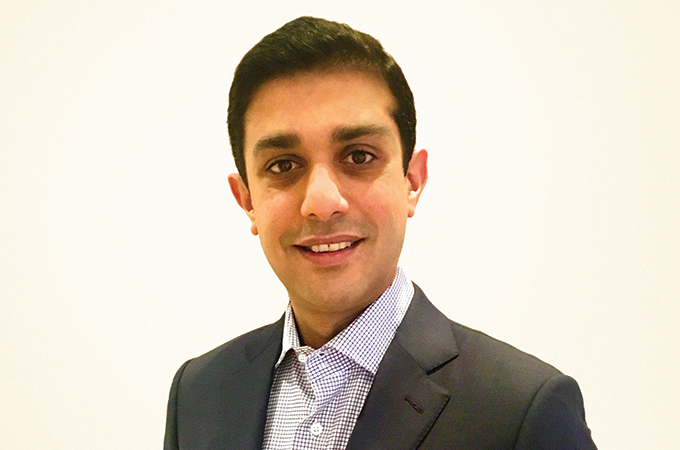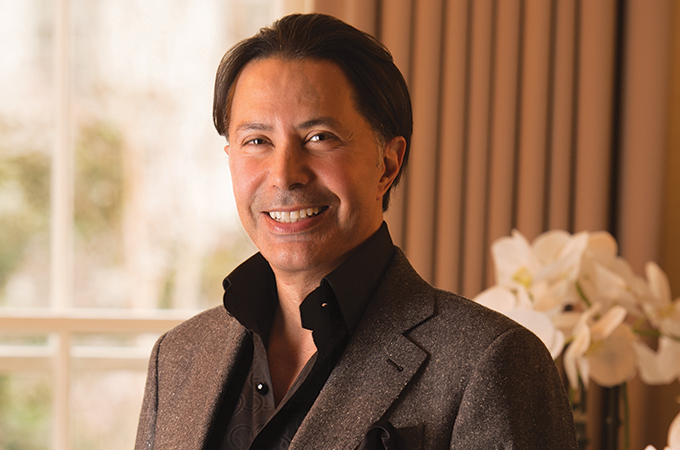Spring/Summer 2023
One such pioneering Saudi archaeologist is Dr Saad Abdul Aziz Al-Rashid, a man who has dedicated his entire life to unravel the hidden treasures of Arabia’s heritage.
With a wealth of experience spanning over five decades in the field of archaeology, Dr Saad’s narratives bring the past and present to life, weaving vivid frames of history that transport listeners on an unforgettable journey through time.
As one of the most distinguished archaeologists in Saudi Arabia and the wider world, Dr Saad’s perspective offers a unique and enlightening approach to understanding the rich history of the Islamic world.
He has supervised several excavation campaigns in Saudi Arabia and published extensive archaeological research in Arabic and English, both as sole author and in collaboration with others. He has also been on the advisory panels of museums and is a recipient of several awards.
“History isn’t only about wars, destructions and exploits of kings; it is more about people, their life, and their contributions to humankind,” he stresses. “And these sites and discoveries show us the path to the past.”
Since he first set foot on Darb Zubaydah (Zubaida Trail), the pilgrim road connecting Kufa in present-day Iraq and Makkah, as part of his doctorate thesis in 1977, Dr Saad has been involved with many projects that are of huge significance to Islamic heritage. One of the most recent of these was the first Islamic Biennale Jeddah, of which he is a leading member of the creative and curatorial team.
“Islamic Biennale Jeddah is a dream come true for me. I have lived through it,” explains an excited professor. “The biennale is not just an exhibition or something from the past; it takes one on a journey through culture and integration with the multiculturalism of Muslims.
“The biennale, which is mainly family-oriented, is a joyous event where people quietly enjoy the heritage of their land and the beautiful contemporary art produced by artists from Saudi Arabia and all over the world,” he adds.
INTEREST IN HERITAGE
While Dr Saad uncovers the mysteries of the past, let’s dig deeper into the person behind the scholar.
Dr Saad’s father came from his native town (Huraymla) north-west of Riyadh, the capital of Saudi Arabia, but travelled all over western and southern Saudi Arabia, initially working as a mutawa and later as a government representative in remote areas. His mother belonged to Jizan area and young Saad spent his early childhood there before moving to Jeddah for studies.
Dr Saad completed his schooling in Jeddah and then pursued history studies at King Saud University in Riyadh, where he gained knowledge and experience from his teachers, particularly Professor Abdulrahman Al Ansary, who is considered the father of archaeology in Saudi Arabia.
After receiving his Bachelor’s degree in history in 1969,
Dr Saad went to the University of Leeds in the UK to pursue an MA in Islamic Studies and later a PhD degree. His research work focused on studying the Darb Zubaydah pilgrim route connecting Kufa in present-day Iraq and Makkah in Saudi Arabia.
The almost 1,500-km road, often as much as 18 m wide, and dotted with wells and resting posts along its course, transported many thousands of pilgrims down for the Hajj and Umrah pilgrimages – a landmark engineering achievement of its time, as well as a clear demonstration of religious purpose and generosity.
“I conducted a major survey of the road from Iraq to Makkah, which involved inspecting various sites and collecting a lot of materials. Although I found it very challenging as a young scholar, I persevered. I also received training in archaeological fieldwork in Iran,” recounts Dr Saad.
He travelled the great distances through different terrains meeting local people of all kinds and resting in the ruins of the stations of the pilgrim trail.
“Here on these sites, in the early centuries of Islamic history, thousands of caravans had stopped and drawn water from the wells and cisterns, or bought water and food from the nomads and also purchased grass to feed their animals. My challenge was not in the rough living environment of the trip but in making the selection as to what material I should concentrate on most. Should I focus on the water installations and their engineering? Or the collapsed remains of the once great palaces and forts that had received caliphs, leaders, learned men, warriors as well as the thousands of men and women who were simply travelling through?
“Overall, my experiences gave me a unique perspective on Saudi Arabia’s history and culture, which fuelled further my passion for archaeology and history,” he continues.
Dr Saad became fascinated with the water installations on the pilgrim routes and their importance to pilgrims who came from all over the Islamic world.
“Across the Zubaida Trail, which was elaborately engineered, there are specified stations or rest stops with buildings that are connected to a superior system to distribute water from dams, wells, pools, springs, and canals. The road was paved with stones in sandy and muddy areas, cleared of boulders and obstacles, and had flags, lighthouses and distance markers stones carefully placed to guide travellers day and night.
“These are exceptional and some of the wells are used even today,” he says.
Dr Saad’s research work took him to several Arab countries and European states, including Syria, Tunisia, Iraq, Egypt, Morocco, and Spain. He presented his thesis in Saudi Arabia in 1977 and was awarded a PhD degree.
Dr Saad’s passion for archaeology and history remained strong, and he continued working in the field, affiliated with the King Saud University first as the dean of the College of Arts and later as a promoted professor.
According to Dr Saad, his interest in archaeology was sparked by Professor Abdulrahman Al-Ansary and the way he taught the subject. Prof Al-Ansary played a vital role in introducing new techniques and teaching methods to the field, he says.
Along with Prof Al-Ansary, Dr Saad played a key role in establishing the Department of Antiquities in King Saud University in 1978, where the goal was to train Saudi specialists in the field of archaeology, particularly Islamic archaeology. The duo also helped establish the Saudi Archaeological Society.
Dr Saad was also involved extensively in the excavation of the historical Al-Rabadhah site, a settlement located on the Darb Zubaydah pilgrim route, and the Qaryat Al Faw site on the edge of Rub Al Khali.
Dr Saad published his much-acclaimed book, Al-Rabadhah: A Portrait of Early Islamic Civilisation in Saudi Arabia, in 1986. His second book on the subject will be released soon. A highlight of the edition is a feature on a cemetery in Makkah which houses hundreds of tombstones of people from various countries who died during their pilgrimage.
His widely recognised books include Al-Madinah Atharuha wa Nuqushuha al-Islamiyya (2009), and Medieval Routes to Mecca: A Study of the Darb Zubaydah Pilgrim Trail (2018).
In a foreword to the ‘Medieval Routes to Mecca: A Study of the Darb Zubaydah Pilgrim Trail’, King Abdulaziz Public Library writes: “We are incredibly fortunate that this subject has received the meticulous attention of the distinguished archaeologist and historian, Professor Dr Saad bin Abdulaziz Al-Rashid. His study has encouraged the excavation of the sites along the route, documented in his PhD thesis and subsequent research. Without his enthusiasm and dedication, we would unquestionably know very little today of the remarkable story of this road.”
Since 1992, Dr Saad has been a professor in Islamic archaeology at the College of Arts, King Saud University, apart from holding other senior posts at that institution, including Dean of Library Affairs, King Saud University (1986-1992); Chair of the Department of Library and Information Science (1989-90); and Chair of the Department of Archaeology and Museology (1994-96). Between 1996 and 2005, he was Deputy Minister for Antiquities and Museums at the Ministry of Education of Saudi Arabia.
On transferring the Antiquities and Museums to the High Commission of Tourism, the two witnessed a speedy development as one unit: Saudi Commission of Tourism and National Heritage (SCTH). Dr Saad was named the Cultural Advisor to HRH Prince Sultan bin Salman bin Abdulaziz, former Chairman of SCTH.
“I was fully dedicated to my work in the university and never pursued a job outside of academia except during my almost a decade with the ministry,” says Dr Saad.
Over the years, Dr Saad has participated in several academic gatherings, including the Seminar for Arabian Studies held in London in 2004, where he presented a survey of “The Development of Archaeology in Saudi Arabia”. He had also served as an advisor for the establishment of the Museum of Haramain in Makkah.
In addition, he has also received numerous awards in recognition of his contributions to recording and preserving Saudi Arabia’s heritage, including the Ameen Madani Award for Research on the History of the Arabian Peninsula in 1998 and the Abdullah Al-Nuaim Award (Archaeology Section) in 2022. The Saudi Arabian government has also recognised him with the Order of King Abdulaziz (First Class) in 1999 and the King Khaled Medal (Third Degree) in 2020.
GOVERNMENT SUPPORT
Dr Saad praises the government for consistently supporting the excavation and restoration of historical sites in Saudi Arabia. The Higher Council for Antiquities, founded in 1972 with Dr Abdullah Hassan Masry as its first director, launched numerous initiatives across the country, including excavations, museum and cultural centres, preservation of historic landmarks, and site acquisitions, he remembers.
While there were initial challenges in establishing teams, the government’s efforts to unify the protection of tourism, national heritage, and culture have contributed positively to this area, he says.
“There are 13 archaeological and cultural museums throughout the kingdom that showcase relics and cultural monuments from across the country. The kingdom has a vast collection of historical artefacts, some of which are older than the Islamic period, and this diversity makes the country stand out as a unique destination for anyone interested in history and heritage,” he adds.
The first national museum was established in 1978, and in 1999, the massive King Abdulaziz Historical Center – National Museum was opened. Covering an area of 17,000 sq m, the museum showcases 3,700 artifacts such as statues, scripts, and unique sculptures that tell the story of Arabia. Dr Saad recommends it as a must-see for anyone visiting Saudi Arabia.
Dr Saad is now a member of the Board of Trustees of the National Museum and the Director of the Archaeological Society.
Meanwhile, Dr Saad is happy that Saudi heritage, archaeology, and culture are now taking the international stage. According to him, the Saudi government’s promotion of these aspects of the kingdom in its tourism drive has helped generate more interest in heritage places, which will change the broader context of cultural diplomacy and Saudi soft power.
“The Saudi Vision 2030, led by Crown Prince Mohammed bin Salman Al Saud, recognises culture as a tool for economic and social progress, and the Ministry of Culture and other government authorities are working hard to put Saudi Arabia on the global cultural map.
“It’s truly the beginning of the golden era of Saudi archaeology and heritage,” says Dr Saad, highlighting the increased global visibility of historical sites such as AlUla, Diriyah, Jeddah Historic City, rock arts in Hail and Najran, in addition to Al-Ahsa Oasis and Neom.
“We are proud of our cultural heritage, and we want the world to benefit from it. The land of Saudi Arabia is rich in cultural and historical sites that reflect the development of early man in Arabia up until the present day. This heritage is not only important for Saudi Arabia, but also for the world,” he adds.
Dr Saad says Saudi Arabia’s cultural heritage represents not only that of the country, but also the entire Arabian Peninsula. He stresses that the heritage is a fusion of the pre-Islamic Arabian culture and Islamic civilisation and disagrees with the categorisation of Islamic culture into segments by some scholars, stating that it is a culture of unity.
“The door is now open for visitors to come and enjoy the Islamic historical sites with ease,” says Dr Saad.
“We are not merely seeking people’s admiration of things, but rather a deep understanding of their relevance to humanity and the potential benefits they hold for the world at large. Our mission extends beyond promoting Saudi Arabia as a tourist destination; we also aim to exhibit the inherent hospitality of Saudis towards visitors, a core value deeply ingrained in our culture.”
On the impact of tourism on Saudi society, he says: “Our people are now educated and mature, and we have nothing to fear about the influence of western civilisation. Our cultural heritage is precious, and people from all over the world appreciate it,” he adds.
In conclusion, Dr Saad expresses his gratitude for the unwavering support he has received from the government, his team, family, and students in his relentless pursuit to discover the kingdom’s long-lost riches, concealed deep within the sands of time.



.jpg)
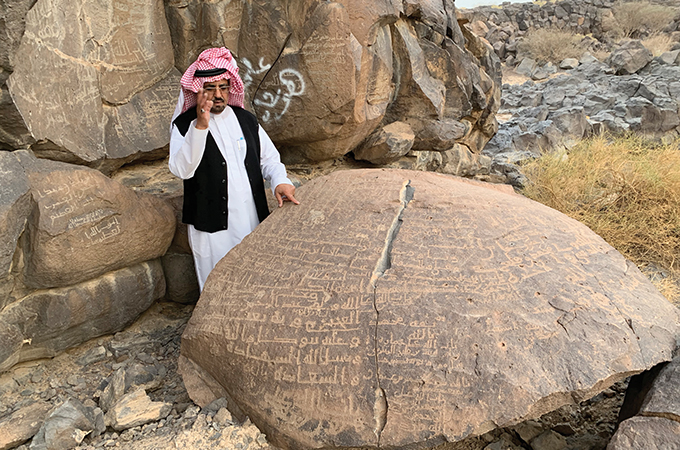








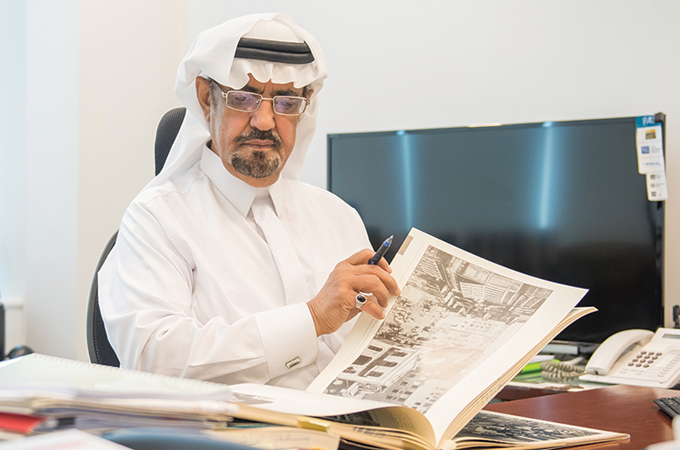
.jpg)








